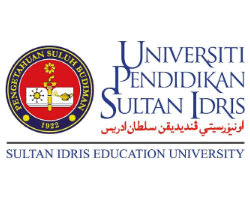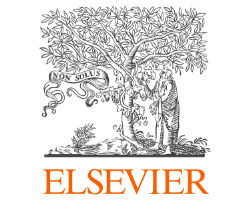Step by Step Implementation of DSRM for Personalization of Reading
Abstract
This paper aims to discuss step-by-step activities of the implementation of Design Science Research Methodology (DSRM) in the development of Personalization teaching and learning materials for children. DSRM is adapted in the development of personalized teaching and learning materials due to its potential to provide specific guidelines based on specific outcomes. This paper revealed the potential of DSRM as a reliable and comprehensive methodology that leads the developer on step by step processes to perform the development. Apart from that this study provides details description on the development of personalized teaching and learning materials that is successfully developed using the DSRM methodology as guidelines.
Downloads
References
J. D. Basham, T. E. Hall, R. A. Carter, and W. M. Stahl, “An Operationalized Understanding of Personalized Learning,” Journal of Special Education Technology, vol. 31, no. 3, pp. 126–136, 2016.
M. R. Husin, I. Y. Panessai, and H. Ahmad, “Interactive Module Development of Teacher’s Measurements”, ij-humass, vol. 1, no. 1, pp. 1-6, May 2019.
A. Atkin, “Peirce’s theory of signs,” 2013 [Online]. Available: http: //plato.stanford.edu/archives/sum2013/entri es/peirc e-semio tics/. [Accessed: Oct 2020].
S. Bagheri, R. J. Kusters, and J. J. Trienekens, “Eliciting end users requirements of a supportive system for tacit knowledge management processes in value networks: a Delphi study,” in: Engineering, technology and innovation (ICE/ITMC). IEEE, pp 1317–1326, 2017.
A. Ismail, N. Z. Mohamed Zain, and H. Mat Zin, “A Simple Survey on Attitude of Computer Science Diploma Students towards STEM”, ij-humass, vol. 2, no. 2, pp. 76 - 88, Dec. 2019.
I. M. Azpiazu, N. Dragovic, and M. S. Pera, Finding, Understanding and Learning: Making Information Discovery Tasks Useful for Children and Teachers. Pisa Italy: Search as Learning (SAL), 2016.
E. Bearne, and D. Reedy, Teaching Primary English: Subject Knowledge and Classroom Practice. London: Routledge, 2017.
Nur Syazlina Hanim, “Pelajar Berkecerdasan Tinggi dalam Kalangan Pelajar Kelas Rancangan Khas”, ij-humass, vol. 2, no. 1, pp. 1 - 13, Jun. 2019.
N. S. Hanim, “Pelajar Berkecerdasan Tinggi dalam Kalangan Pelajar Kelas Rancangan Khas”, ij-humass, vol. 2, no. 1, pp. 1 - 13, Jun. 2019.
H. Michael, C. K. Kevyn, C. Jamie, E. Maxine, J. Alan, and W. Lois, “Personalization of Reading Passages Improves Vocabulary Acquisition,” International Journal of Artificial Intelligence in Education, vol. 20, no. 1, pp. 73-98, 2010.
M. Mansor, W. A. Wan Adnan, and N. Abdullah, “A Step-by Step Process in Designing Personalized Reading Content for Slow Learner Children”, ij-humass, vol. 2, no. 2, pp. 95 - 102, Dec. 2019.
P. C. Brown, H. L. Roediger, and M. A. McDaniel, Make it stick. Harvard University Press, 2014.
R. Hashim and M. H. Mohamad Yatim, “Hubungan Antara Motivasi dan Penerimaan Dengan Pencapaian Akademik Pelajar Dalam Pembelajaran Menggunakan M-Pembelajaran di Kolej Vokasional”, ij-humass, vol. 2, no. 2, pp. 89 - 94, Dec. 2019.
R. Baskerville, and M. D. Myers, “Special issue on design science research in information systems: making IS research relevant to practice: foreword,” MISQ, vol. 28, pp. 329–335, 2004.
A. Adesuyi, O. Obolo, S. Oloja, and B. Badeji-Ajisafe, “A Framework of Concept Complexity-based Personalized E-learning System. Journal of Education,” Society and Behavioural Science, vol. 24, no. 4, pp. 1-6, 2018.
N. Laili, S. E. Purwanto, and F. Alyani, “Pengaruh Model Penemuan Terbimbing Berbantu LKPD terhadap Kemampuan Pemahaman Konsep Matematis Siswa SMPN 6 Depok”, ij-humass, vol. 2, no. 1, pp. 14 - 37, Jun. 2019.
K. Peffers, T. Tuunanen, M. A. Rothenberger, S. Chatterjee, “A Design Science Research Methodology for Information Systems Research,” Journal of Management Information Systems, vol. 24 no. 3, pp. 45–77, 2008.
A. R. Hevner, S. T. March, J. Park, and S. Ram, “Design Science in Information System Research,” MIS Quarterly, vol. 28, no. 1, pp. 75–105, 2004.
S. Benhamdi, A. Babouri, and R. Chiky, “Personalized recommender system for e-learning environment,” Education and Information Technologies, pp. 1-23, 2016.
D. E. G. Avison, Fitzgerald Information systems development: methodologies, techniques and tools, 4th edn. Maidenhead: McGraw-Hill Maidenhead, 2006.
Anynomous, “Agile,” 2018 [Online]. Available: http: //www.agile modeling.com/artif acts/userS tory.htm. [Accessed: Oct 2020].























